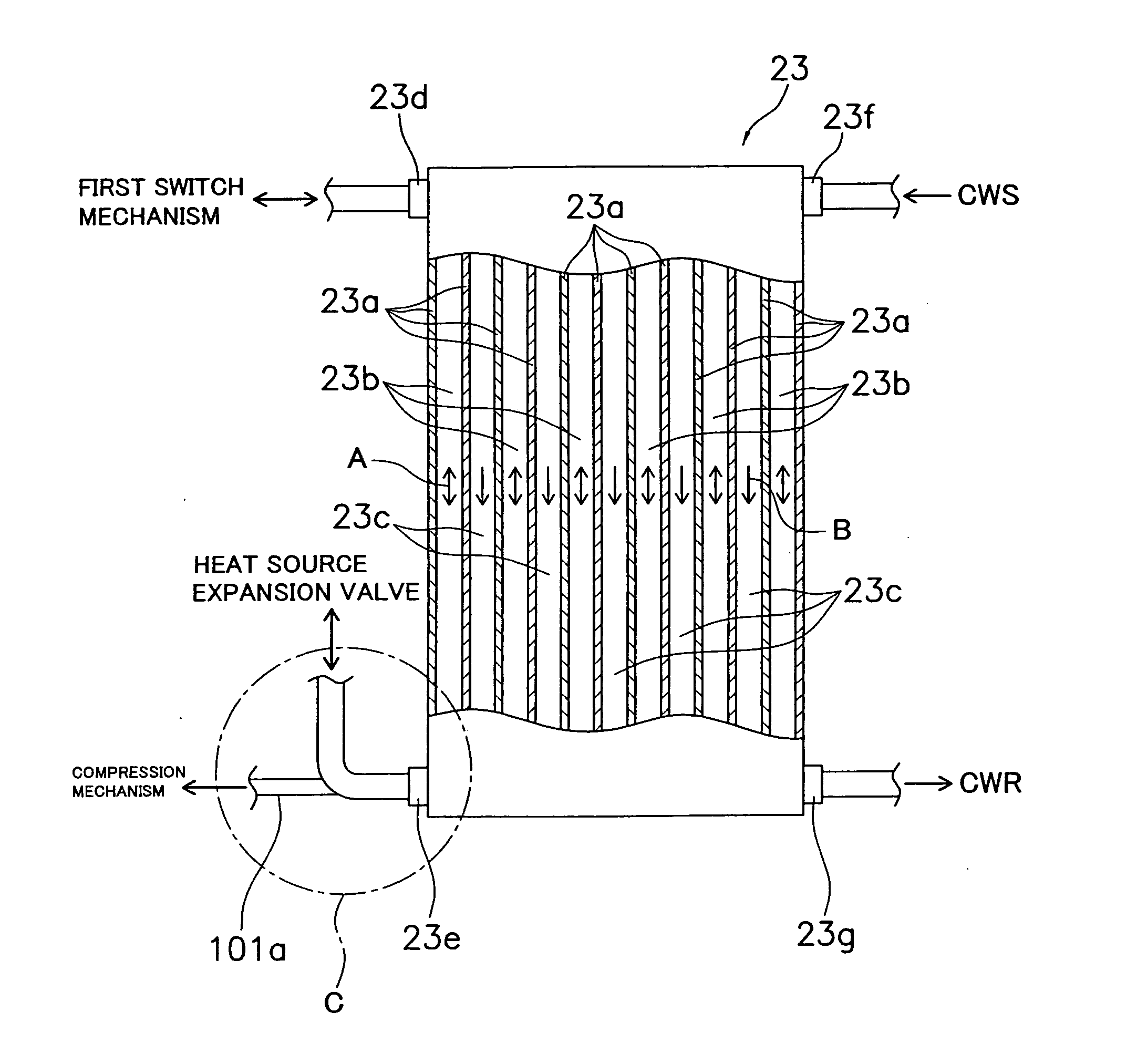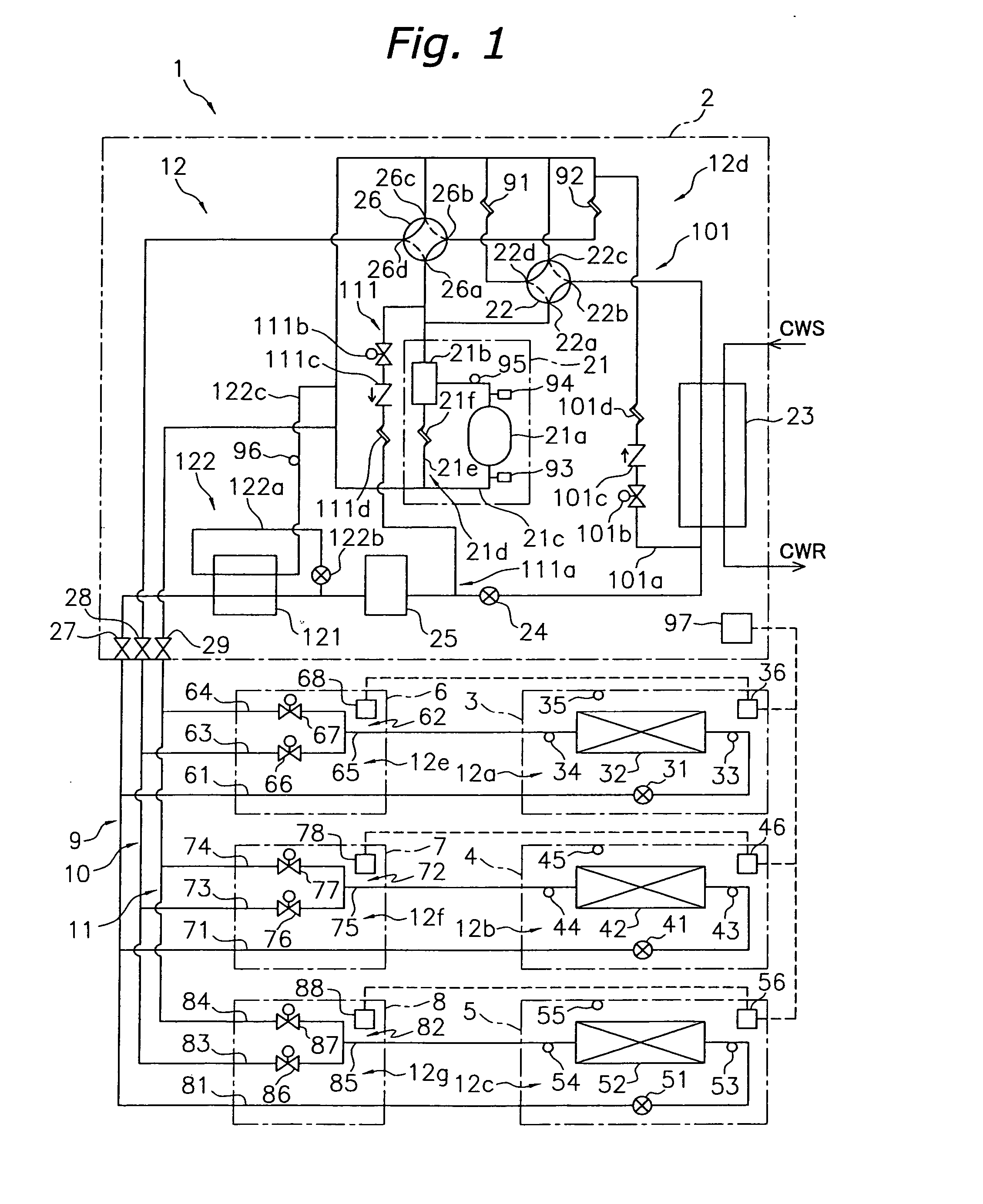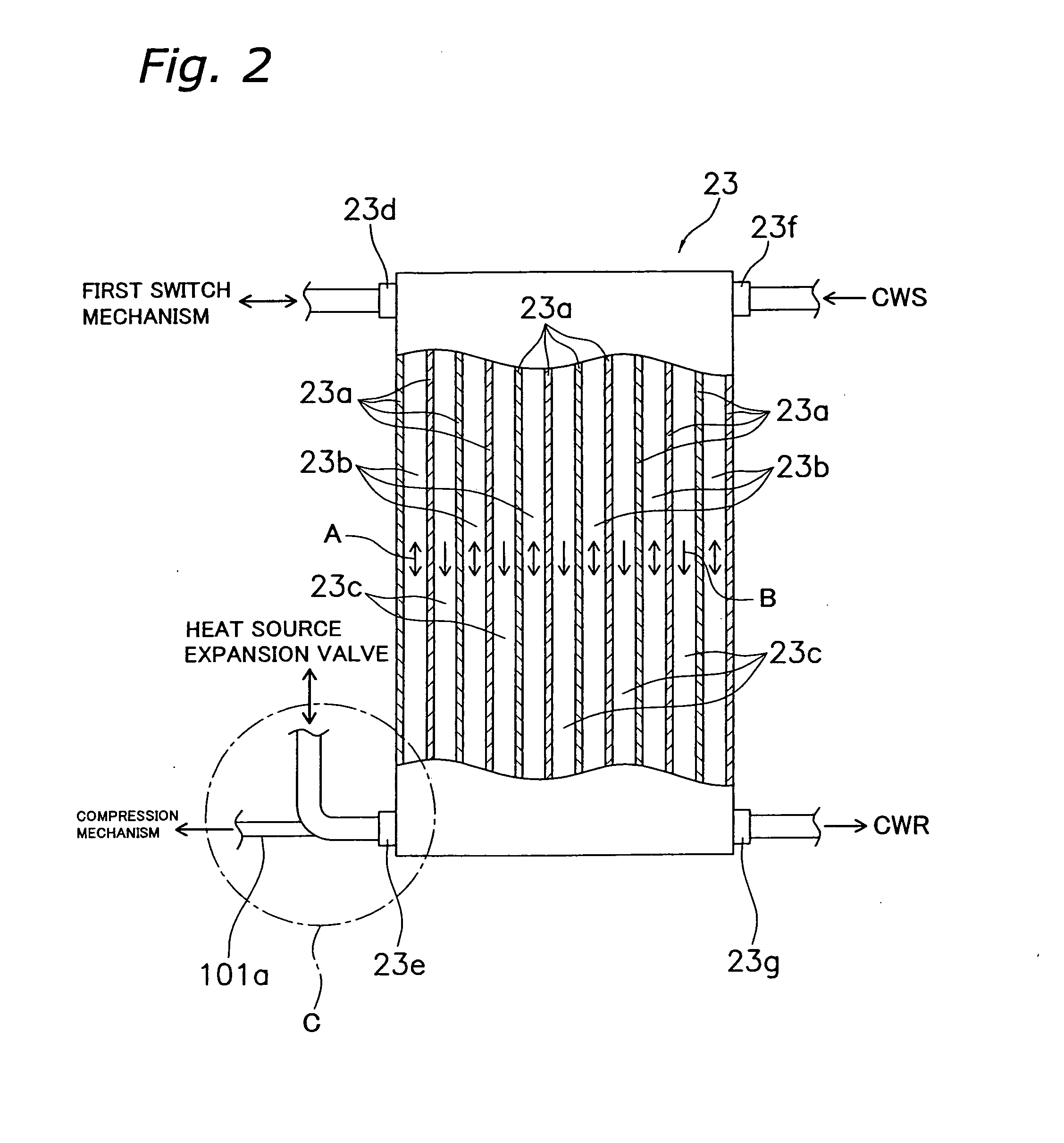Refrigerating Apparatus and Air Conditioner
a technology of refrigerating apparatus and air conditioner, which is applied in the direction of indirect heat exchangers, lighting and heating apparatus, heating types, etc., can solve the problems of increasing the number of parts and costs, the evaporation ability cannot be sufficiently controlled, and the opening of the heat source expansion valve cannot be reduced, so as to reduce the evaporation ability of the heat source heat exchanger, reduce the number of heat sources, and reduce the effect of evaporation ability
- Summary
- Abstract
- Description
- Claims
- Application Information
AI Technical Summary
Benefits of technology
Problems solved by technology
Method used
Image
Examples
modification 1
(4) Modification 1
[0192] In the aforementioned air conditioner 1, the heat source unit 2 and the utilization units 3, 4 and 5 are connected via the refrigerant communication pipes 9, 10 and 11 and the connection units 6, 7 and 8 in order to configure an air conditioner capable of simultaneous cooling and heating. However, as shown in FIG. 8, the heat source unit 2 and the utilization units 3, 4 and 5 may also be connected via only the refrigerant communication pipes 9 and 10 in order to configure an air conditioner capable of simultaneous cooling and heating. Specifically, the air conditioner 1 of the present modification is configured such that the low-pressure gas refrigerant communication pipe 11 and the connection units 6, 7 and 8 necessary for making the air conditioner capable of simultaneous cooling and heating are omitted, the utilization units 3, 4 and 5 are directly connected to the liquid refrigerant communication pipe 9 and the high-pressure gas refrigerant communication...
modification 2
(5) Modification 2
[0206] In the aforementioned air conditioner 1, the first oil returning circuit 101, the pressurizing circuit 111, the cooler 121 and the cooling circuit 122 were disposed in the heat source unit 2 in order to expand both the control width of the control of the evaporating ability of the heat source heat exchanger 23 with the heat source expansion valve 24 and the control width of the control of the condensing ability of the heat source heat exchanger 23 with the heat source expansion valve 24. However, when the control width of the control of the condensing ability of the heat source heat exchanger 23 is ensured and it is necessary to expand only the control width of the control of the evaporating ability of the heat source heat exchanger 23, for example, just the first oil returning circuit 101 (i.e., omitting the pressurizing circuit 111, the cooler 121 and the cooling circuit 122) may be disposed in the heat source unit 2 as shown in FIG. 11 (i.e., the pressuri...
modification 3
(6) Modification 3
[0207] In the aforementioned air conditioner 1, four-way switch valves were used as the first switch mechanism 22 and the second switch mechanism 26, but the switch mechanisms are not limited thereto. For example, as shown in FIG. 12, three-way switch valves may also be used as the first switch mechanism 22 and the second switch mechanism 26.
PUM
 Login to View More
Login to View More Abstract
Description
Claims
Application Information
 Login to View More
Login to View More - R&D
- Intellectual Property
- Life Sciences
- Materials
- Tech Scout
- Unparalleled Data Quality
- Higher Quality Content
- 60% Fewer Hallucinations
Browse by: Latest US Patents, China's latest patents, Technical Efficacy Thesaurus, Application Domain, Technology Topic, Popular Technical Reports.
© 2025 PatSnap. All rights reserved.Legal|Privacy policy|Modern Slavery Act Transparency Statement|Sitemap|About US| Contact US: help@patsnap.com



